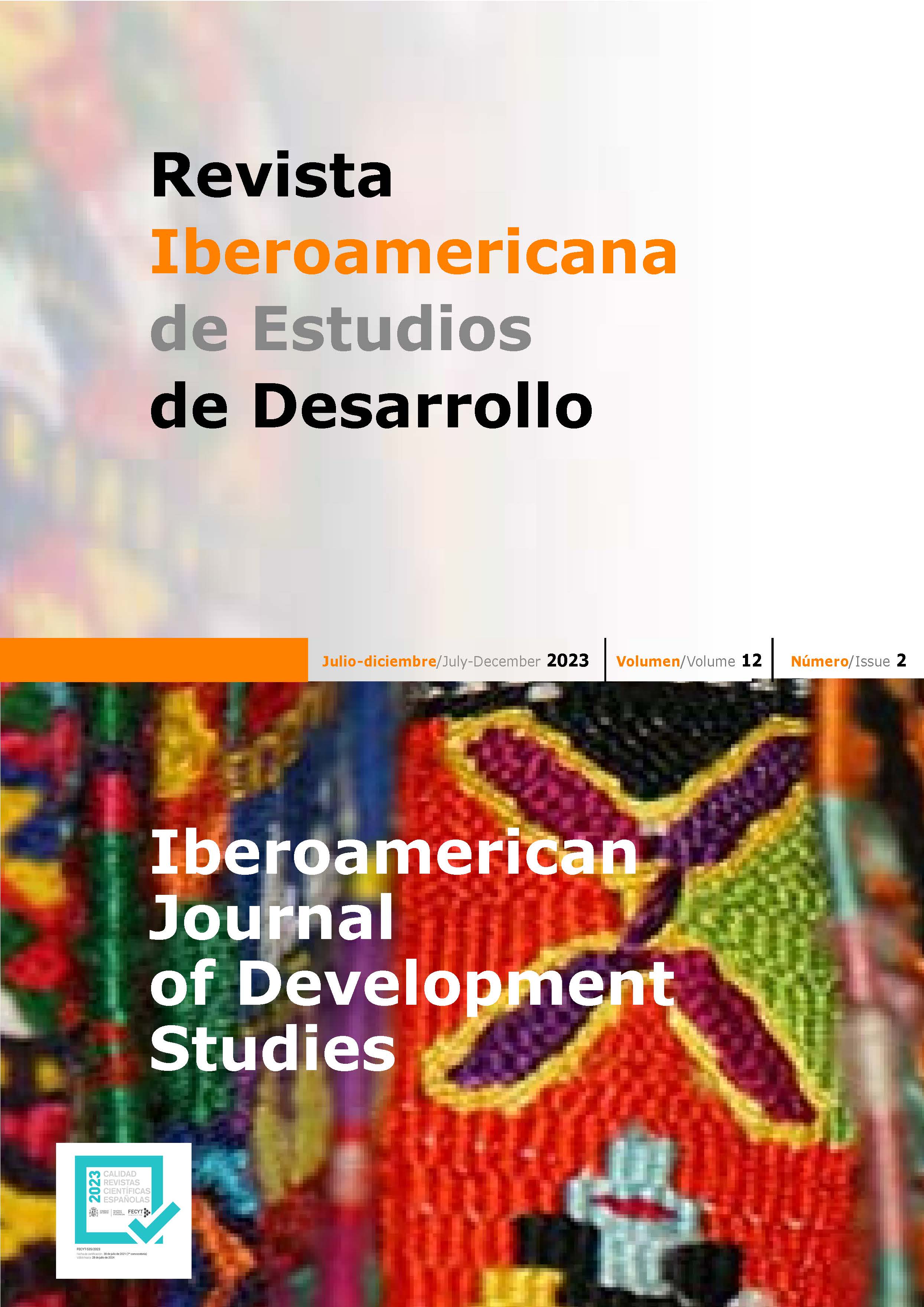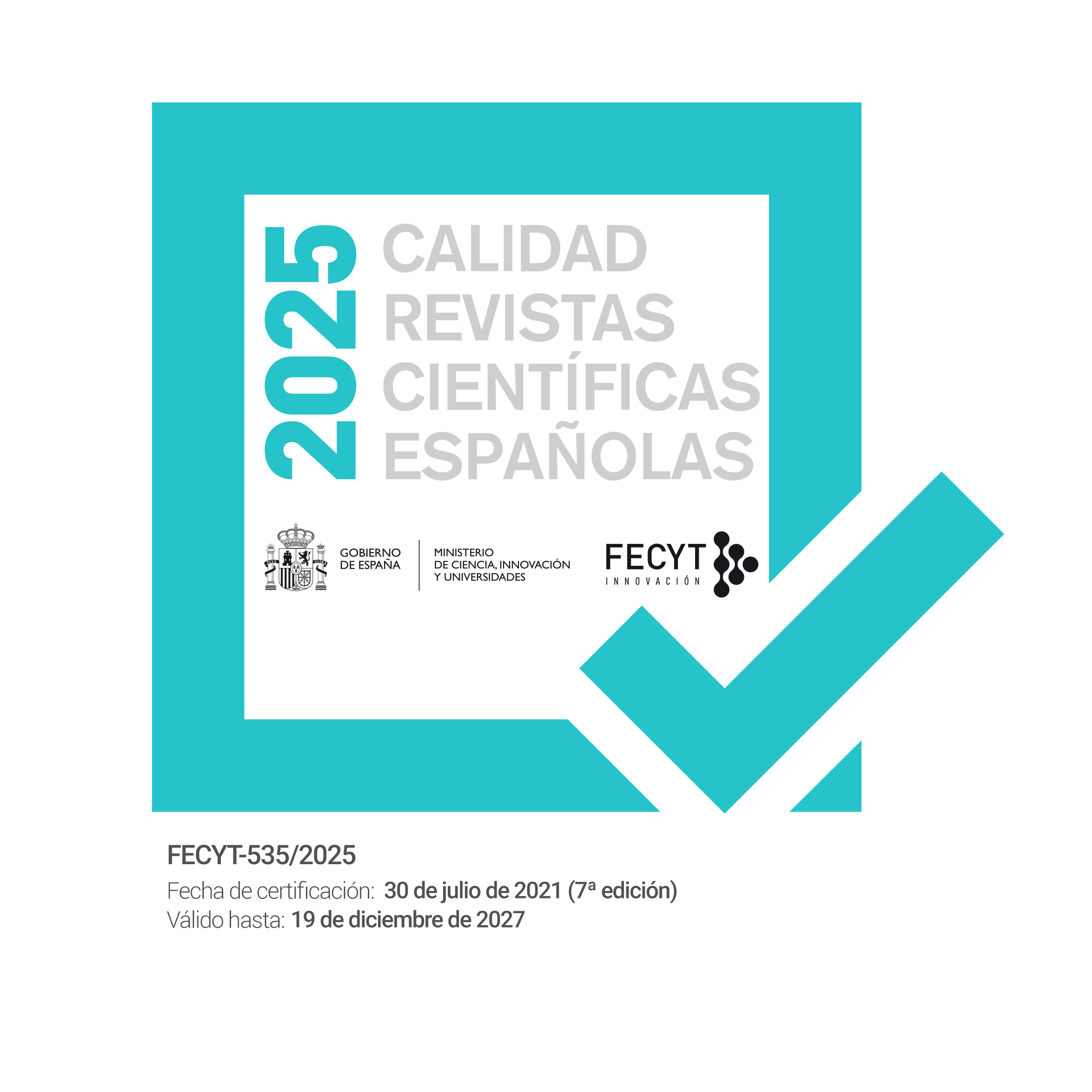Sistemas de recolección de datos de víctimas de trata en Europa. Una aproximación comparada desde los informes de evaluación Greta del Consejo de Europa
DOI:
https://doi.org/10.26754/ojs_ried/ijds.776Palabras clave:
trata de seres humanos, Consejo de Europa, enfoque de derechos humanos, sistemas de recolección de datos, política comparadaResumen
El problema de la trata de personas y la forma más efectiva de abordarla se ha ido perfilando en los últimos veinte años. Con la guía general del Protocolo de Palermo, y su desarrollo en el Convenio de Varsovia, el enfoque de derechos humanos se sitúa en el centro de las propuestas para afrontar el problema. Una de las características de este enfoque requiere poner en marcha un sistema de recolección de datos que permita dibujar una idea de la realidad de la trata en cada país. En este estudio, se propone un análisis comparado de los distintos sistemas de recolección de datos de víctimas en Europa. En el texto, se concluye que existe una amplia disparidad en torno a qué se está contabilizando, lo que imposibilita la comparación, a la vez que pone en tela de juicio el enfoque basado en derechos humanos en la aproximación a la trata.
Descargas
Referencias
ARONOWITZ A (2010). Overcoming the Challenges to Accurately Measuring the Phenomenon of Human Trafficking. International Review of Penal Law 81(3-4):493-511.
BALDWIN-EDWARDS M, BLITZ B, CRAWLEY H (2019). The Politics of Evidence-Based Policy in Europe’s Migration Crisis. Journal of Ethnic and Migration Studies 45(12):2139-2155.
BALES K, HESKETH O, SILVERMAN B (2015). Modern Slavery in the UK: how many victims? Significance 12(3):16-21.
BALL P, ASHER J, SULMONT D, MANRIQUE D (2003). How many Peruvians have died? An estimate of the total number of victims killed or disappeared in the armed internal conflict between 1980 and 2000. American Association for the Advancement of Science, Washington.
BARTOLINI S (1994). Tiempo e investigación comparativa. En: Sartori G y Morlino L (coords.). La comparación en Ciencias Sociales. Alianza, Madrid.
BLANCO C, MARINELLI C (2017). Víctimas de Trata de Personas versus Migrantes En Situación Irregular. Retos y lineamientos para la atención y protección de las víctimas de trata de personas extranjeras en el Perú. Revista de la Facultad de Derecho PUCP 78:173-198.
BONILLA T, MO C (2019). The Evolution of Human Trafficking Messaging in the United States and Its Effect on Public Opinion. Journal of Public Policy 39(2):201-234.
BRUNOVSKIS A, SKILBREI M (2016). Two Birds with One Stone? Implications of Conditional Assistance in Victim Protection and Prosecution of Traffickers. Anti-Trafficking Review (6):13-30.
CANEPPELE S, MANCUSO M (2013). Are Protection Policies for Human Trafficking Victims Effective? An Analysis of the Italian Case. European Journal on Criminal Policy and Research 19(3):259-273.
CHO S-Y (2015a). Measuring Anti-Trafficking Policy - Integrating Text and Statistical Analysis. Social Science Quarterly 96(2):656-683.
CHO S-Y (2015b). Modeling for Determinants of Human Trafficking: An Empirical Analysis. Social Inclusion 3(1):2-21.
CHO S-Y (2015c). Evaluating Policies Against Human Trafficking Worldwide: An Overview and Review of the 3P Index. Journal of Human Trafficking 1(1):86-99.
CHO S-Y, VADLAMANNATI K (2012). Compliance for Big Brothers. An Empirical Analysis on the Impact of the Anti-Trafficking Protocol. European Journal of Political Economy 28(2):249-265.
CHO S-Y, DREHER A, NEUMAYER E (2014). The determinants of anti-trafficking policies – Evidence from a new index. Scandinavian Journal of Economics 116(2):429-454.
CHUANG J (2010). Rescuing Trafficking from Ideological Capture: Prostitution Reform and Anti-Trafficking Law and Policy. University of Pennsylvania Law Review 158(6):1655-1728.
CHUANG J (2014). Exploitation Creep and the Unmaking of Human Trafficking Law. American Journal of International Law 108(4):609-649.
CONSEJO DE EUROPA (2005). Convenio del Consejo de Europa sobre la lucha contra la trata de seres humanos, Varsovia.
DATTA M, BALES K (2013). Slavery in Europe: Part 1, Estimating the dark figure. Human Rights Quarterly 35(4):817-829.
DAUNIS RODRÍGUEZ A (2013). El delito de trata de seres humanos. Tirant Lo Blanch, Valencia.
DAUNIS RODRÍGUEZ A (2015). La Nueva Criminalización del Proxenetismo. Revista Penal (36):55-66.
DIJK J (2015). Estimating human trafficking worldwide: a multi-mode strategy. En: Kangaspunta, Kristiina (ed.). Forum on Crime and Society, World Drug Report, vol. 8. UNODC, Nueva York.
DIJK J, KLERX-VAN MIERLO F (2013). Revisiting the Link between Corruption Prevalence and Implementation Failure in Anti-Trafficking Policies. International Perspectives in Victimology 7(2):1-30.
DIJK J, KLERX-VAN MIERLO F (2014). Quantitative Indices for Anti-Human Trafficking Policies: Based on Reports of the U.S. State Department and the Council of Europe. Crime, Law and Social Change 61(2):229-250.
DIJK J, HEIJDEN P, KRAGTEN-HEERDINK S (2016). Multiple Systems Estimation for Estimating the Number of Victims of Human Trafficking across the World. UNODC, Viena.
DOEZEMA J (2002). Who gets to choose? Coercion, consent, and the UN trafficking Protocol. Gender and Development 10(1):20-27.
DOEZEMA J (2010). Sex Slaves and Discourse Masters: The Construction of Trafficking. Zed Books, Londres.
EUROSTAT (2013). Trafficking in human beings in the EU. Unión Europea, Luxemburgo.
EUROSTAT (2014). Trafficking in human beings in the EU. Unión Europea, Luxemburgo.
EUROSTAT (2015). Trafficking in human beings in the EU. Unión Europea, Luxemburgo.
EUROSTAT (2018). Data collection on trafficking in human beings in the EU. Bélgica: Unión Europea.
FARRELL A, PFEFFER R (2014). Policing Human Trafficking: Cultural Blinders and Organizational Barriers. The ANNALS of the American Academy of Political and Social Science 654(1):46-64.
GALLAGHER A (2001). Human rights and the new UN protocols on trafficking and migrant smuggling: a preliminary analysis. Human Rights Quarterly 23(4):975-1004.
GALLAGHER A (2010). The International Law of Human Trafficking. Cambridge University Press, Cambridge.
GALLAGHER A, MCADAM M (2013). Abuse of a position of vulnerability and other «means» within the definition of trafficking in persons. UNODC, Nueva York.
GALLAGHER A, MCADAM M (2014). The role of «consent» in the Trafficking in Persons Protocol. UNODC, Nueva York.
GOULD A (2010). From Pseudoscience to Protoscience: Estimating Human Trafficking and Modern Forms of Slavery. Second Annual Conference on Human Trafficking. Universidad de Nebraska, Lincoln.
GOZDZIAK E, BUMP M (2008). Data and Research on Human Trafficking: Bibliography of Research-Based Literature. Washington DC.
IGLESIAS SKULJ A (2011). La protección de los derechos humanos en el ámbito de las políticas contra la trata de mujeres con fines de explotación sexual. Nova et Vetera 20(64):121-132.
JORDAN A (2002). Human Rights or Wrongs? The Struggle for a Rights-Based Response to Trafficking in Human Beings. Gender and Development 10(1):28-37.
KANGASPUNTA K (2015). Forum on Crime and Society, World Drug Report, vol. 8. UNODC, Nueva York.
KONRAD R, TRAPP A, PALMBACH T, BLOM J (2017). Overcoming Human Trafficking via Operations Research and Analytics: Opportunities for Methods, Models, and Applications. European Journal of Operational Research 259(2):733-745.
LACZKO F, GRAMEGNA M (2003). Developing Better Indicators of Human Trafficking. Brown Journal of World Affairs X(1):179-194.
LEÓN FJ (2010). Spanish Legislation against Trafficking in Human Beings: Punitive Excess and Poor Victims Assistance. Crime, Law and Social Change 54(5):381-409.
LIMA DE PÉREZ J (2015). Examining Trafficking Statistics Regarding Brazilian Victims in Spain and Portugal. Crime, Law and Social Change 63(3-4):159-190.
LIMONCELLI S (2010). The Politics of Trafficking: The First International Movement to Combat the Sexual Exploitation of Women. Stanford University Press, Stanford (California).
LLOYD P, SIMMONS B (2015). Framing the new transnational legal order: the case of human trafficking. En: Halliday TC y Shaffer G (eds.). Transnational Legal Orders. Cambridge University Press, Nueva York, pp. 400-438.
MAQUEDA ABREU ML (2009). Prostitución, feminismos y derecho penal. Comares, Granada.
MARX A, RIHOUX B, RAGIN C (2014). The origins, development, and application of Qualitative Comparative Analysis: the first 25 years. European Political Science Review 6(1):115-142.
MERRY SE (2016). The seductions of quantification. Measuring Human Rights, Gender Violence, and Sex Trafficking. The University Chicago Press, Chicago and London.
NACIONES UNIDAS (2000). Protocolo de las Naciones Unidas para Prevenir, Reprimir y Sancionar la Trata de personas, especialmente mujeres y niños. Palermo.
RAGIN C (1987). The Comparative Method: Moving Beyond Qualitative and Quantitative Strategies. University of California Press, Berkeley.
REQUENA ESPADA L, GIMÉNEZ-SALINAS FRAMIS A, ESPINOSA MJ (2012). Estudiar la trata de personas. Problemas metodológicos y propuestas para su resolución. Revista Electrónica de Ciencia Penal y Criminología 14:1-42.
RUBIO GRUNDELL L (2015). EU Anti-Trafficking Policies: From Migration and Crime Control to Prevention and Protection. Migration Policy Centre, Policy Briefs 2015/09.
RUIZ SUTIL C (2015). La técnica legal del «Hilo de Ariadna» en la protección internacional para la esclava de la trata. Cuadernos de Derechos Transnacional 7(2):320-344.
SCHÖNHÖFER J (2017). Political Determinants of Efforts to Protect Victims of Human Trafficking. Crime, Law and Social Change 67(2):153-185.
SHIN YJ (2017). A transnational human rights approach to human trafficking: empowering the powerless. Brill Nijhoff.
SHIN YJ (2018). A transnational human rights approach to human trafficking: empowering the powerless. Brill Nijhoff.
SILVERMAN B (2014). Modern Slavery: An Application of Multiple Systems Estimation. Gobierno de Reino Unido, Londres.
SIMMONS BA, LLOYD P, STEWART BM (2018). The Global Diffusion of Law: Transnational Crime and the Case of Human Trafficking. International Organization 72(2):249-281.
SZMOLKA I, DE CUETO C (2011). Objeto y método de la política comparada. Universidad de Granada, Granada.
TORRES ROSELL N, VILLACAMPA ESTIARTE C (2017). Protección jurídica y asistencia para víctimas de trata de seres humanos. Revista General de Derecho Penal 27:1-48.
TYLDUM G (2010). Limitations in Research on Human Trafficking, International Migration 48(5):1-13.
TYLDUM G, TYEIT M, BRUNOVSKI A (2005). Taking Stock. A Review of the Existing Research on Trafficking for Sexual Exploitation. FAFO, Oslo.
UNIÓN EUROPEA (2011). Directiva 2011/36/UE del Parlamento Europeo y del Consejo de 5 de abril de 2011 relativa a la prevención y lucha contra la trata de seres humanos y a la protección de las víctimas y por la que se sustituye la Decisión marco 2002/629/JAI del Consejo, Estrasburgo.
VILLACAMPA ESTIARTE C (2011). La nueva Directiva Europea relativa a la prevención y la lucha contra la Trata de Seres Humanos y a la protección de las víctimas. ¿Cambio de rumbo de la política de la Unión en materia de trata de seres humanos? Revista Electrónica de Ciencia Penal y Criminología 13:1-52.
VILLACAMPA ESTIARTE C (2013). The European Directive on Preventing and Combating Trafficking in Human Beings and the Victim-Centric Treatment of This Criminal Phenomenon. European Criminal Law Review 2(3):291-317.
VILLACAMPA ESTIARTE C (2015). La trata de seres humanos tras la reforma del Código Penal de 2015. Diario La Ley 8554:1-18.
VILLACAMPA ESTIARTE C, TORRES N (2012). Mujeres víctimas de trata en prisión en España. Revista de Derecho Penal y Criminología 8:411-494.
VRIES I, DETTMEIJER-VERMEULEN C (2015). Extremely wanted: human trafficking statistics What to do with the hodgepodge of numbers? En: Kangaspunta K (ed.). Forum on Crime and Society, World Drug Report, vol. 8. UNODC, Nueva York.
WEITZER R (2014). New Directions in Research on Human Trafficking. Annals of the American Academy of Political and Social Science 653(1):6-24.
WISE M, SCHLOENHARDT A (2014). Counting Shadows – Measuring Trafficking in Persons in Australia. International Journal of Criminology and Sociology 3:249-266.
ZHANG S X, SPILLER M W, FINCH B K, QIN Y (2014). Estimating Labor Trafficking among Unauthorized Migrant Workers in San Diego. The ANNALS of the American Academy of Political and Social Science 653(1):65-86.
Descargas
Publicado
Número
Sección
Licencia
Derechos de autor 2023 Alba Villanueva-Fernández

Esta obra está bajo una licencia internacional Creative Commons Atribución-NoComercial-SinDerivadas 4.0.






